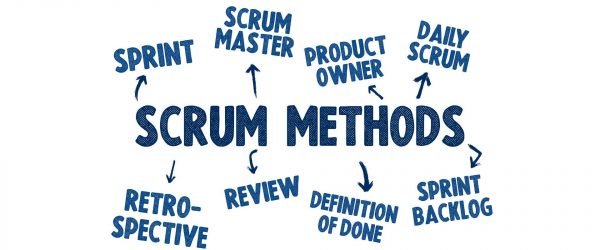Mobile apps have become indispensable tools for businesses aiming to enhance their digital presence, streamline operations, and engage customers. In 2023, the global mobile app revenue reached an astonishing $935 billion, underscoring the growing importance of mobile apps in the business landscape (Statista, 2023). However, the cost of developing a mobile app can vary significantly, driven by a multitude of factors. This article aims to educate readers on the main factors that influence the cost of developing a mobile app, providing insights that can help in budgeting and planning effectively.
Factors That Affect the Cost of Mobile App Development
1. App Complexity and Features
When it comes to mobile app development, the complexity and features of the app are key factors influencing the cost. Apps can range from simple to highly complex, each requiring different levels of development effort and resources.
Simple vs. Complex Apps
- Simple apps with basic functionalities, such as calculators or note-taking apps, require less development time and resources.
- Complex apps with advanced features like augmented reality (AR), artificial intelligence (AI), or real-time user interactions significantly increase the development cost.
Impact of Features on Development Cost
- Each additional feature requires more coding, testing, and debugging, adding to the overall cost. For instance, integrating AI capabilities can add an extra $20,000 to $40,000 to the project budget (Source: Clutch.co).
2. Platform Choice: iOS vs. Android
Choosing between iOS and Android platforms can impact development costs due to differences in programming languages, development environments, and device fragmentation. Each platform has its own set of considerations that affect development time and resources.
Differences in Development for iOS and Android
- iOS development often incurs higher initial costs due to stricter guidelines and a smaller variety of devices.
- Android development can be costlier in the long run due to the need to accommodate a wider range of devices and screen sizes.
Cost Implications of Multi-Platform Development
- Developing for both platforms separately can double the cost, while hybrid or cross-platform solutions like React Native or Flutter offer a more cost-effective approach.
3. Design and User Experience (UX)
The design and user experience of the app play a crucial role in its success. High-quality design and intuitive UX not only attract users but also enhance engagement and retention. Custom designs and advanced UX features can increase development costs but are essential for creating a competitive app.
Importance of High-Quality Design and Intuitive UX
- A well-designed app not only attracts users but also retains them. According to a study by Forrester, a good UX can increase conversion rates by up to 400%.
Cost Differences Between Basic UI and Custom Designs
- Basic UI designs are more budget-friendly, but custom, high-end designs that offer a unique user experience can be quite expensive, often adding an extra $15,000 to $30,000 to the development cost.
4. Development Team Location and Expertise
The location and expertise of the development team can significantly influence development costs. Factors such as labor costs, expertise, and experience level vary depending on the location of the development team. Additionally, the size and structure of the team can affect project timelines and overall costs.
Comparison of Costs for Developers in Different Regions
- North American developers charge between $100 to $150 per hour, while developers in Eastern Europe charge $30 to $50 per hour (Source: Upwork).
In-House vs. Outsourcing Development
- In-house development provides more control but can be more expensive due to overhead costs.
- Outsourcing to regions with lower labor costs can be more economical, though it may come with challenges such as time zone differences and communication barriers.
Impact of Team Expertise and Experience on Cost
- Experienced developers and designers may charge higher rates, but their expertise can lead to a more efficient development process and a higher-quality product.
5. Backend Infrastructure and Maintenance
Setting up and maintaining backend infrastructure, including servers, databases, and APIs, is another cost factor in mobile app development. Scalability considerations and ongoing maintenance also contribute to the overall cost of the project.
Costs Associated with Setting Up and Maintaining Servers, Databases, and APIs
- Backend development includes setting up servers, databases, and APIs, which can cost anywhere from $5,000 to $20,000 initially, depending on the complexity.
Scalability Considerations and Ongoing Maintenance Costs
- As your user base grows, you’ll need to scale your backend infrastructure. Maintenance costs can range from 15% to 20% of the initial development cost annually (Source: DZone).
6. Integration with Third-Party Services
Many mobile apps require integration with third-party services such as payment gateways, social media platforms, and analytics tools. Integrating these services adds complexity to the development process and may incur additional costs.
Examples of Third-Party Services
- Common integrations include payment gateways (like PayPal or Stripe), social media integrations, and analytics tools.
Cost Implications of Integrating These Services
- Each third-party service can add to the development cost. For instance, integrating a payment gateway can add $5,000 to $10,000 to your budget (Source: Clutch.co).
7. Security Features
Ensuring the security of the app is essential for protecting user data and maintaining trust. Implementing robust security features, such as encryption and secure data storage, adds to the development cost but is necessary for safeguarding sensitive information.
Importance of Robust Security Measures
- Ensuring your app is secure is crucial to protect user data and maintain trust. The average cost of a data breach in 2023 was $4.45 million (Source: IBM).
Costs Associated with Implementing Advanced Security Features
- Implementing advanced security measures such as encryption, secure data storage, and GDPR compliance can add $5,000 to $15,000 to the development cost.
8. Testing and Quality Assurance
Comprehensive testing and quality assurance are crucial for ensuring that the app functions correctly and meets user expectations. Different types of testing, including manual and automated testing, are necessary to identify and address any issues before the app is launched.
Types of Testing
- Testing can include manual testing, automated testing, and beta testing to ensure the app functions correctly across different devices and use cases.
Impact of Comprehensive Testing on the Overall Cost
- While comprehensive testing can add 20% to 30% to the development cost, it helps prevent costly issues post-launch.
9. Post-Launch Support and Updates
Post-launch support and updates are ongoing costs associated with mobile app development. Providing regular updates and addressing user feedback are essential for maintaining app performance and user satisfaction over time.
Importance of Ongoing Support and Regular Updates
- Continuous support and updates are essential for maintaining app performance and user satisfaction. The average cost for post-launch support ranges from $500 to $2,000 per month.
Costs Associated with Post-Launch Services
- These costs include bug fixes, performance optimization, and adding new features, which can significantly impact the total cost over time.
10. Marketing and Launch
Marketing the app and successfully launching it in the market are needed for its success. Budgeting is extremely important as it impacts development costs and overall project success.
Cost Considerations for Marketing the App and Gaining User Traction
- Effective marketing strategies, including app store optimization (ASO), digital marketing, and user acquisition campaigns, are crucial for a successful launch. Marketing budgets can range from $10,000 to $50,000, depending on the scale and reach of the campaigns.
Budgeting for App Store Optimization (ASO)
- ASO helps improve the app’s visibility in app stores, potentially increasing downloads. Investing in ASO can cost between $1,000 and $5,000.
The Price of Developing a Mobile App
General Cost Ranges for Different Types of Apps
- Simple apps: $10,000 to $50,000
- Moderately complex apps: $50,000 to $100,000
- Highly complex apps: $100,000 to $500,000+
Explanation of How the Factors Combine to Influence the Final Cost
- The overall cost of app development is a sum of all these factors. For example, a moderately complex app with custom design, developed for both iOS and Android, with third-party integrations and robust security features, could cost around $150,000.
Real-World Examples
- A fitness app with basic tracking features might cost around $30,000, while an on-demand delivery app with real-time tracking and payment gateway integration could easily reach $150,000 or more.
How We Can Help You?
We specialize in making app/software development and delivery models simpler for our partners. Founded by professionals from IITs and top engineering colleges in India, and headquartered in Gurgaon, India, our mission is to deliver best-in-class software solutions that exceed customer expectations.
Our professionals have worked with globally recognized organizations such as Oracle, Infosys, IBM, Yatra, and successful startups, bringing a wealth of experience and innovation to each project.
What we bring to the table?
- Expert Consultation: Our team of seasoned professionals can provide you with detailed consultations to help you understand the best approach for your mobile app development project.
- Custom Development Solutions: Whether you need a simple app or a highly complex solution, we tailor our services to meet your specific requirements and budget constraints.
- End-to-End Services: From initial concept and design through development, testing, and post-launch support, we offer comprehensive services to ensure your app is successful.
- Cost-Effective Strategies: We leverage our expertise to deliver high-quality solutions while optimizing costs, ensuring you get the best value for your investment.
- Global Reach, Local Expertise: With a team experienced in working with clients from different regions, we combine global standards with local insights to deliver superior results.
Are you ready to turn your app idea into reality? Contact us today for a personalized quote or consultation and let’s start building your next successful mobile app.
Conclusion
Developing a mobile app involves various factors that significantly influence the overall cost. From app complexity and platform choice to design, backend infrastructure, and post-launch support, each element plays a crucial role in determining the final price. Understanding these factors can help you budget effectively and make informed decisions for your mobile app project.
Frequently Asked Questions
What is the average cost of developing a mobile app?
The average cost ranges from $30,000 to $150,000, depending on the app’s complexity and features.
How long does it typically take to develop a mobile app?
Development time can range from 3 to 12 months, depending on the app’s complexity and the development team’s expertise.
Is it cheaper to develop an app for iOS or Android?
Generally, developing for iOS is slightly more expensive due to stricter guidelines, but Android development can become costlier over time due to device fragmentation.
What are the hidden costs in mobile app development?
Hidden costs can include ongoing maintenance, updates, and marketing efforts post-launch.
How can I reduce the cost of developing my mobile app without compromising quality?
Opt for cross-platform development, prioritize essential features, and consider outsourcing to regions with lower development costs.
Are you considering developing a mobile app in 2024? What are the key features you want to include? Let us know in the comments!







